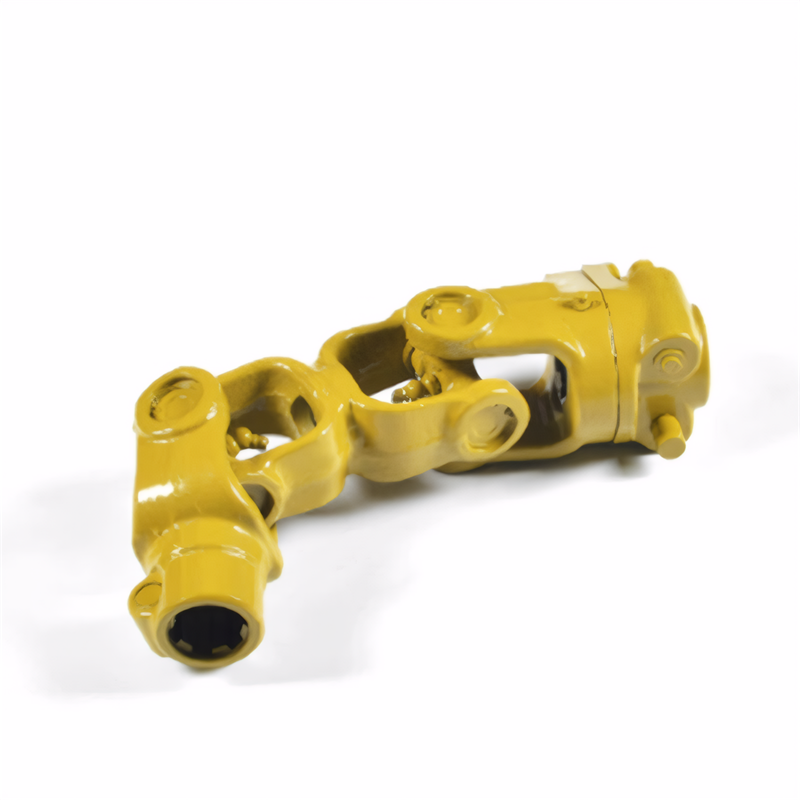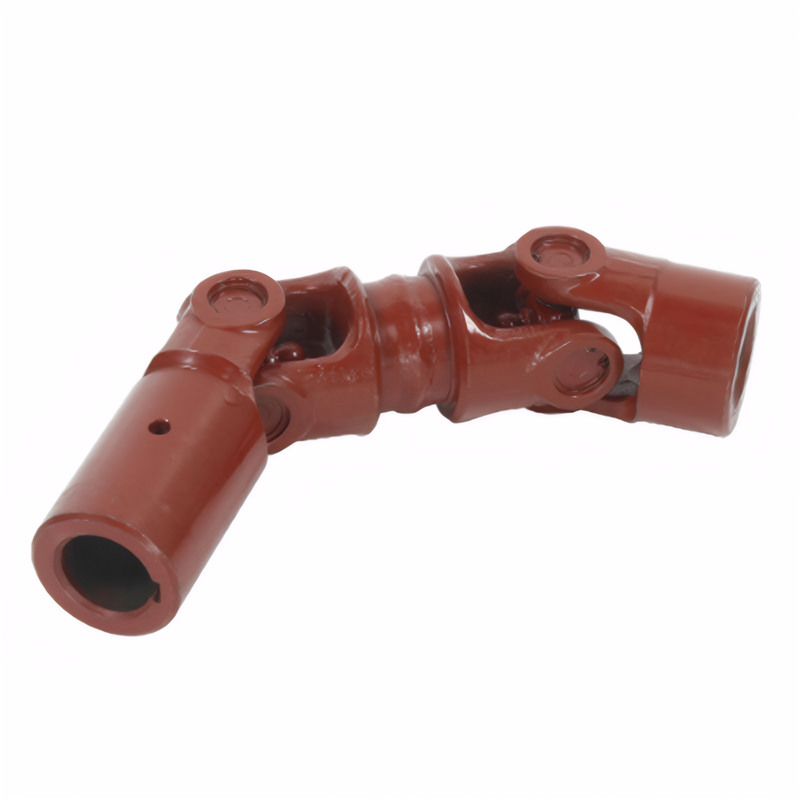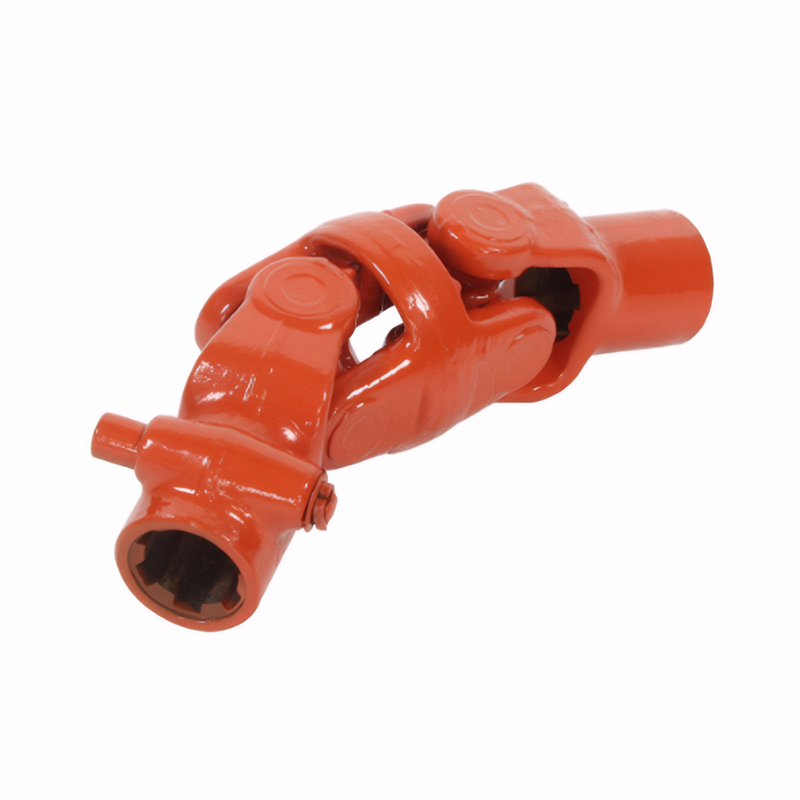The methods for surface treatment of drive shafts
Surface Treatment Methods for Transmission Shafts
Enhancing Wear Resistance Through Hardening Techniques
Surface hardening is critical for extending the service life of transmission shafts under abrasive and impact loads. Induction hardening, a widely adopted method, involves localized heating of the shaft surface using high-frequency alternating current. For automotive propeller shafts, this process typically heats the surface to 850–900°C within seconds, followed by rapid quenching in water or polymer solutions. The result is a martensitic layer with a hardness of 50–55 HRC, while the core retains its toughness. Studies show that induction-hardened shafts exhibit 300% higher wear resistance compared to untreated components when tested under simulated road conditions.
Another approach is laser hardening, which uses a focused laser beam to achieve precise heat input. This method is advantageous for complex geometries, such as splined sections of gearbox output shafts. By controlling the laser power (1.5–3 kW) and scan speed (10–50 mm/s), a hardened layer of 0.3–0.8 mm depth with 60 HRC hardness can be achieved. The minimal heat-affected zone (HAZ) reduces the risk of distortion, making it suitable for high-precision components in electric vehicle drivetrains.
For low-carbon alloy steels, carburizing remains a preferred choice. Shafts are heated to 900–950°C in a carbon-rich atmosphere (e.g., methane or propane), allowing carbon diffusion into the surface layer. After quenching, the carburized zone (0.8–1.2 mm thick) achieves a hardness of 58–62 HRC, while the core remains ductile. This dual-phase structure is essential for heavy-duty truck driveshafts subjected to both torsional and bending stresses.
Corrosion Protection Strategies for Diverse Environments
Transmission shafts operating in humid or chemically aggressive environments require robust corrosion resistance. Electroless nickel plating offers uniform coverage, even on complex shapes like threaded ends. A 5–10 μm nickel-phosphorus layer deposited at 85–90°C provides excellent protection against salt spray and industrial chemicals. In marine applications, adding 10–15% phosphorus to the coating enhances hardness (450–500 HV) and reduces porosity, extending service life by 40% compared to standard nickel plating.
Anodizing is another effective method for aluminum alloy shafts used in electric vehicles. By immersing the shaft in an electrolytic solution (e.g., sulfuric acid) and applying a DC current, a porous oxide layer forms on the surface. This layer, typically 15–25 μm thick, can be sealed with hydrated aluminum oxide to improve corrosion resistance. Testing under ASTM B117 salt spray conditions shows that anodized aluminum shafts maintain their integrity for over 500 hours, whereas untreated components degrade within 100 hours.
For steel shafts exposed to high-temperature environments, aluminizing provides thermal stability and oxidation resistance. The process involves diffusing aluminum into the steel surface at 650–750°C, forming an intermetallic layer (FeAl or Fe₃Al). This coating remains stable up to 800°C, making it ideal for industrial machinery driveshafts operating near furnaces or engines. Field data indicates that aluminized shafts reduce oxidation-related failures by 75% in continuous-operation scenarios.
Friction Reduction and Surface Integrity Optimization
Reducing friction is vital for improving energy efficiency and reducing noise in transmission systems. Diamond-like carbon (DLC) coatings, applied via physical vapor deposition (PVD), offer a combination of low friction (μ < 0.1) and high hardness (20–40 GPa). These coatings are particularly effective for high-speed shafts in electric vehicle drivetrains, where they reduce wear rates by 90% compared to uncoated components. The deposition process requires precise control of substrate temperature (150–200°C) and bias voltage (-50 to -150 V) to ensure adhesion without thermal damage.
Polishing is a simpler yet effective method for improving surface finish. For precision-fit shafts, such as those in robotic joints, a final polish to Ra 0.05–0.1 μm reduces friction and prevents fretting corrosion. Automated polishing systems using abrasive belts or lapping compounds achieve consistent results, with dimensional tolerances maintained within ±0.01 mm. In wind turbine main shafts, polishing reduces vibrational noise by 3–5 dB(A), enhancing overall system reliability.
Shot peening is another surface integrity enhancement technique that introduces compressive residual stresses to the surface layer. By propelling steel shots (0.3–0.6 mm diameter) at 20–50 m/s, the surface undergoes plastic deformation, creating a 0.1–0.3 mm deep compressive layer. This process improves fatigue strength by 20–30% in automotive half-shafts, as verified by rotating bending fatigue tests. Advanced shot peening variants, such as ultrasonic peening, offer finer control over stress distribution for critical aerospace components.
Advanced Hybrid Treatments for Multi-Functional Requirements
Combining multiple surface treatments can address conflicting performance demands. For example, a hybrid approach involving induction hardening followed by DLC coating is used in high-performance racing car driveshafts. The hardened base provides wear resistance, while the DLC layer reduces friction and prevents galling during high-speed operation. Testing shows that this combination extends component life by 500% compared to single-treatment alternatives.
Another example is the use of plasma electrolytic oxidation (PEO) for magnesium alloy shafts in lightweight automotive applications. PEO creates a ceramic-like coating (20–50 μm thick) with excellent corrosion resistance and hardness (500–800 HV). By incorporating particles like SiC or Al₂O₃ into the electrolyte, the coating’s wear resistance can be further enhanced. This method is gaining traction in electric vehicle drivetrains, where reducing weight without compromising durability is critical.
For applications requiring both electrical conductivity and corrosion resistance, electroplating with composite materials offers a solution. A nickel-graphite composite coating (5–8 μm thick) provides conductivity (≤10 μΩ·cm) while protecting against environmental degradation. This treatment is used in hybrid vehicle driveshafts, where electrical signals must transmit through rotating components without signal loss or corrosion-induced failures.
 Accuracy requirements for the
Accuracy requirements for the
 Selection of universal joint t
Selection of universal joint t
 Standard for coaxiality error
Standard for coaxiality error
 Requirements for the surface r
Requirements for the surface r
 简体中文
简体中文 English
English
